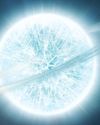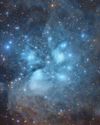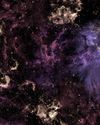Try GOLD - Free
GAMMA-RAY OBSERVATORY
All About Space UK
|Issue 133
This far-sighted next-generation telescope array may help answer some of the universe's biggest mysteries
-

It can be easy to forget that one of the best ways to view the greater universe is to peer far beyond visible light, into the gamma-ray end of the electromagnetic spectrum. With the ability to more efficiently see beyond our Solar System, gamma-ray astronomy is an important field for helping us understand the cosmos.
The Cherenkov Telescope Array (CTA) plans to take the gamma-ray approach one step further than traditional • arrays. By looking into much higher energy ranges than ever before, astronomers will be able to observe nonthermal processes, enabling them to research the great mysteries of the universe.
Non-thermal radiation is considered to be different from normal radiation occurring on the electromagnetic spectrum. It's thought to be created when elementary particles decay, which are the fundamental building blocks of all matter. However, this process isn't yet completely understood. Cosmic rays are included in this definition, and their source is one of the mysteries that the CTA aims to discover.
This story is from the Issue 133 edition of All About Space UK.
Subscribe to Magzter GOLD to access thousands of curated premium stories, and 10,000+ magazines and newspapers.
Already a subscriber? Sign In
MORE STORIES FROM All About Space UK

All About Space UK
MYSTERIES OF THE UNI WHERE ARE ALL THE SPIRAL GALAXIES?
There are far fewer spiral galaxies than elliptical ones in the Supergalactic Plane, and scientists are keen to discover why
7 mins
Issue 161

All About Space UK
ZOMBIE STARS
+10 OTHER TERRIFYING SPACE OBJECTS
8 mins
Issue 161

All About Space UK
HOW TO BEAT LIGHT POLLUTION
Thought it was impossible to observe the wonders of the night sky from towns and cities? Think again. Follow our tips and tricks on successfully observing through sky glow
2 mins
Issue 161

All About Space UK
15 STUNNING STAR CLUSTERS
These beautiful stellar groupings are spattered across the cosmos
8 mins
Issue 161

All About Space UK
Eileen Collins "It was a difficult mission...we were the first to see Mir"
Having served as both the first female pilot and first female commander of NASA's Space Shuttle, Collins boosted the involvement of women in space exploration to a whole new level
9 mins
Issue 161

All About Space UK
MARS LEAKS FASTER WHEN IT'S CLOSER TO THE SUN
The Red Planet has lost enough water to space to form a global ocean hundreds of kilometres deep
2 mins
Issue 161

All About Space UK
FUTURE TECH KANKOH-MARU
This ambitious reusable spacecraft will be capable of taking 50 people to and from orbit
2 mins
Issue 161

All About Space UK
THE FINAL FRONTIER
Beyond the reach of the Sun is a fascinating region of the cosmos that were only just beginning to explore
8 mins
Issue 161

All About Space UK
A long-lost moon could explain Mars' weird shape and extreme terrain
A long-lost moon could explain why Mars is so different from the other rocky planets in the Solar System. Today Mars has two tiny moons.
2 mins
Issue 161

All About Space UK
A sprinkling of cosmic dust may have helped kick-start life on Earth
Cosmic dust may have helped kick-start life on Earth. New findings challenge a widely held assumption that this wasn't a plausible explanation.
3 mins
Issue 161
Translate
Change font size

